Ranked: the best Canon cameras ever
The shining photographic stars of Canon's family tree
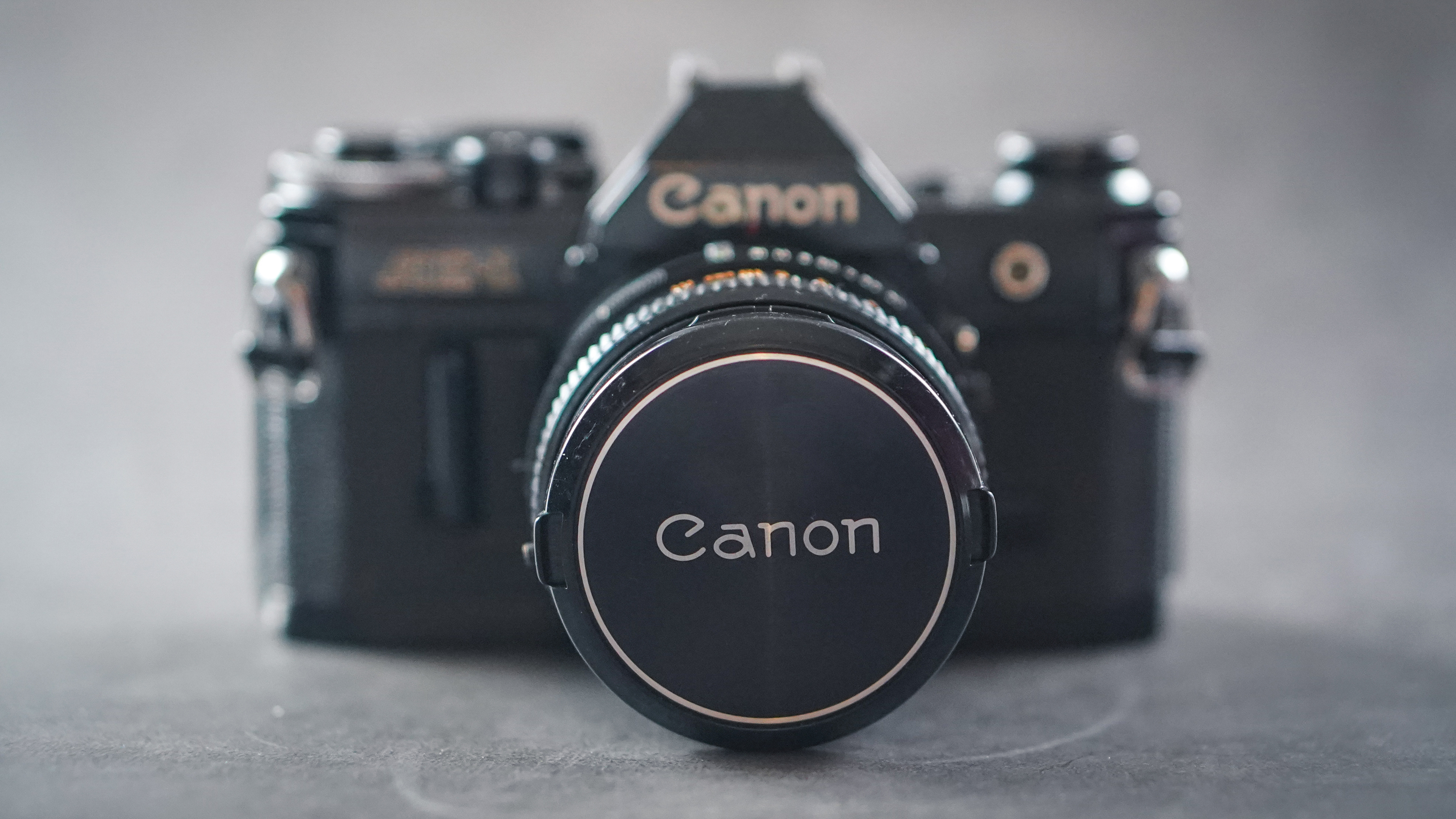
It's already been a pretty momentous year for Canon. In March, its Canon EOS system – which kicked off in 1987 with the Canon EOS 650 – celebrated its 35th birthday. And last month, we saw the arrival of the Canon EOS R7 and EOS R10, two mirrorless cameras that are both powerful and pretty affordable.
But despite the global domination of its EOS brand, Canon's history spreads much farther and wider than its 'Electro Optical System'. So we've decided to gaze back through time and pick out what we think are the best Canon cameras from its 84-year history. After all, if there’s one thing that gets our heart rate going more than a new camera, it’s an old camera.

Also, if there’s one company whose product history tracks the development of modern photography from the very earliest days of photography’s mass-market appeal to the very, very recent past, it’s Canon.
From its 1934 Canon Hansa (let us know if you’ve got one mouldering in a cupboard; they’re selling for about $7,000 / £7,000) to the EOS R7, Canon cameras have documented two World Wars, 20 Olympic Games, hundreds of world leaders and countless family memories.
From cameras that worked without batteries to today’s supercomputers-with-a-lens, tracing Canon’s lineage is to trace photographic history – and consumer and professional tastes.
Here, we’ve lined up 10 of the company’s most notable cameras, both from the world of film and the days of digital. How many have you owned – and which would you add to our list?
The best Canon cameras ever
10. Canon EOS 3 (1998)

- Why it's a classic: it was the ultimate 35mm professional/amateur hybrid
Plus ça change. There was a 23-year gap between the Canon EOS 3 and the next-gen Canon EOS R3, but while Canon’s line-up of high-end cameras was slightly the poorer for the want of a 3-series digital camera, the EOS 3 is an interesting product that tied together Canon’s professional and amateur cameras.
Sign up for breaking news, reviews, opinion, top tech deals, and more.
First, the specs: this was a 35mm camera noteworthy, first and foremost, for its autofocus system, which boasted enough tricks you could slap a pointy hat on it and call it a wizard. Outside of the EOS-1 range of top-end cameras, it had the most sophisticated autofocus system of any of Canon’s cameras, whether digital or film, until the EOS 5D Mark III.
With 45 autofocus points spread across the frame, it allowed a huge amount of compositional flexibility. Not only that, the EOS 3 was Canon’s last camera to allow for eye-control AF, in which you could direct it to use a particular autofocus point by simply looking at the area in the frame while you were looking through the viewfinder. That’s a feature that promptly went AWOL from all of Canon’s cameras until the EOS R3.
That wasn’t all. Further bolstering the EOS 3’s professional credentials was its ability to shoot 4.3 frames per second with its integrated film winding motor; you could bump this to 7fps if you attached the optional Canon Powerdrive Booster.
Perhaps most interestingly – at least to tedious camera nerds like us – is the number of similarities the EOS 3 shares with nearly all of the Canon high-end digital cameras that followed. The mount was consistent until the RF mount came in, of course, but so were the control layouts, the autofocus functionality, the way shooting data was presented in the optical viewfinder and far more. It was this consistency, as much as it was image quality and lens choice, that ensured photographers were able to comfortably navigate the sea-change from film to digital – the EOS 3 is emblematic of that.
9. Canon PowerShot G1 (2000)

- Why it's a classic: it brought DSLR power into your (roomy) pocket
A moment of silence and a tip of the hat to our dear departed compact camera brethren. Born from the ashes of the point-and-shoot film market, compact digital cameras – such as the PowerShot G1 but also the Canon Ixus range – are now all-but dearly departed, usurped by smartphones from below and ever-more capable mirrorless cameras from above.
Back in the year 2000, the PowerShot G1 became a big reason (literally and figuratively) why digital cameras enjoyed such widespread appeal. It wasn’t cheap, but compared to digital SLRs, it represented a more-or-less affordable way to get into high-end digital photography.
It had a 1/1.8in CCD sensor with 3.24 megapixels, and could shoot apertures between 50 and 400. Of interest to ambitious photographers was the inclusion of a manual mode, while the 3x optical zoom (34-102mm converted to 35mm focal lengths, fact-fans) gave plenty of flexibility considering you couldn’t detach the lens. The hotshoe on the top was the final great touch, allowing photographers to begin to get to trips with “proper” flashguns. It could also shoot raw images as well as JPEGs.
There were even a few touches that were positively futuristic, such as the vari-angle screen, as well as some that disappointingly vanished as the compact digital camera developed. We’re thinking in particular here of the top-mounted LCD screen that displayed current shooting information, allowing users to set their camera up – and indeed compose their image via the optical viewfinder – without resorting to the battery-draining, 1.8in rear-mounted screen.
8. Canon EOS R3 (2021)
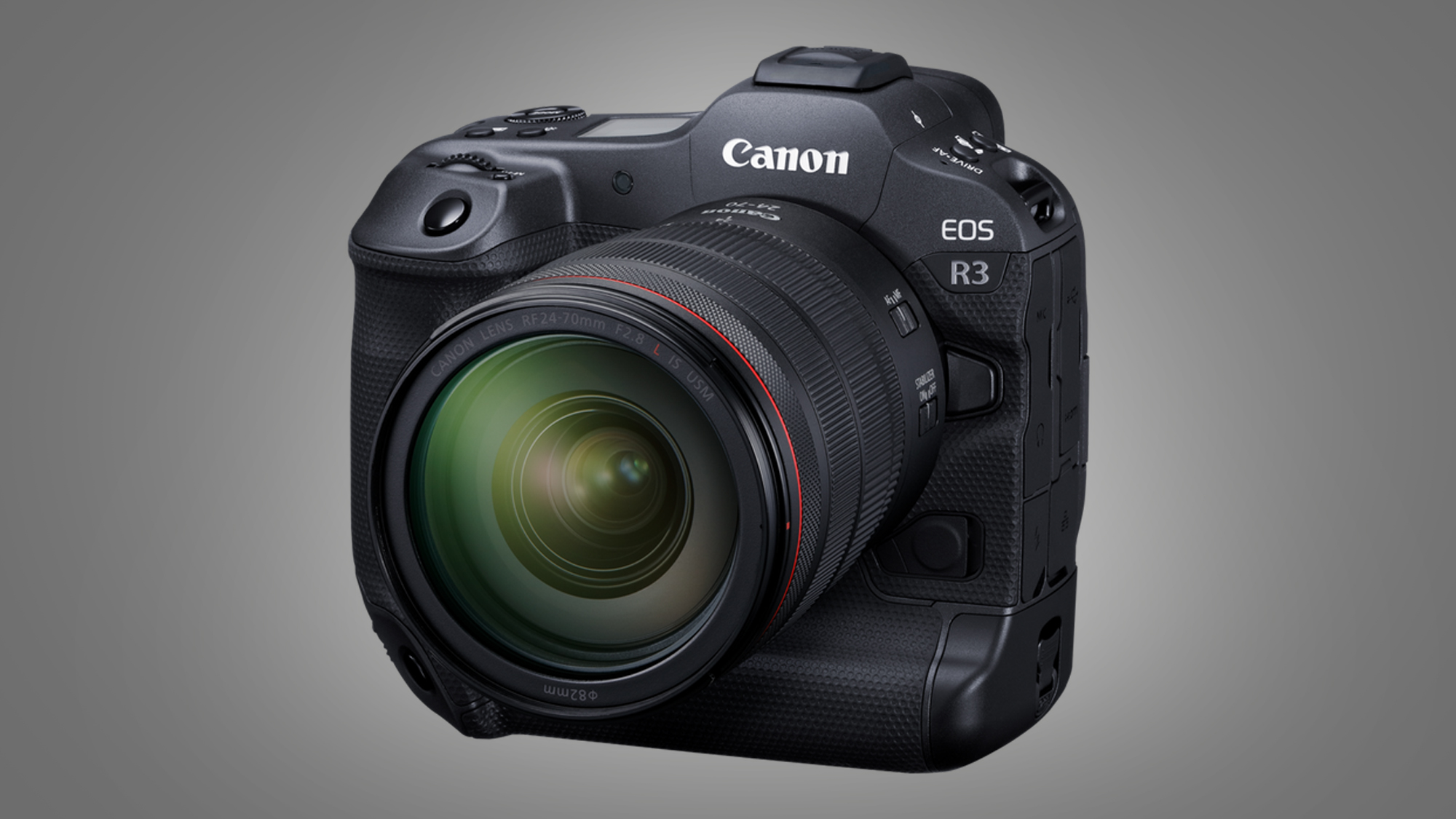
- Why it's a classic: it's one of the most powerful (and best) cameras ever made
So desirable that, as of summer 2022, you can’t actually buy one, the EOS R3 is what happens when a company with Canon’s legendary resources throws absolutely everything at a single product.
Canon’s top-end pro models have long been the stuff of dreams for professional and amateur photographers alike – whether the original EOS-1D X, the 1D X Mark III or the EOS 5D – and the EOS R3 will be featuring in the wildest dreams of many a photographer, irrespective of the genre they shoot in.
There are headline specs to shout about, of course: stick to the mechanical shutter and the EOS R3 will shoot full-frame 24.1MP shots at a clip of 12fps, or 30fps with the electronic shutter. ISO sensitivity runs to a dizzying maximum of 204,800, and like the EOS R5 and R6, the R3 has a positively bonkers autofocus system capable of accurately tracking people, vehicles and animals in all kinds of light. Of course, it shoots video as well – in this case up to 12-bit, 6K RAW or 10-bit 4K.
So far so good, but there’s also the small matter of build-quality. For decades, Canon has produced cameras that could be used to bang in nails, and the R3 – significantly more so than the R6 or R5 – continues that legacy. Dust, water and shock-proofing are all in evidence here, and it’s also Canon’s first full-height (that is, with an integrated grip) mirrorless camera. That improves ergonomics, and also has positive implications for video makers, as that extra mass makes the camera steadier when handheld.
All well and good, but what of the EOS R3’s legacy? How about this: the EOS R3 is Canon’s first mirrorless camera that you’re unlikely to see used anywhere other than in the hands of a pro. That’s not to say the likes of the R5 and R6 aren’t pro cameras, but the EOS R3’s extra bulk, weight and cost make it positively unappealing to amateurs, at least in strictly practical terms. That makes the EOS R3 another mirrorless statement of intent for Canon – why would it make this if it wasn’t betting the house on mirrorless?
7. Canonflex (1959)

- Why it's a classic: it was the SLR that started it all
Ah, the good stuff. Forget your first digital SLR, first autofocus SLR or first TTL (through the lens) exposure SLR – the Canonflex is the one that, in 1959, started it all. It’s the very first Single Lens Reflex camera the company ever produced, prompting the decline of the rangefinder.
Even bearing in mind its revolutionary nature – looking through the lens of a camera and seeing exactly what will end up on the film – the Canonflex bears many of the hallmarks of modern DSLRs. A top-mounted shutter speed selector, a film-winder and a shutter button, all joined by a breech-lock lens mount, plus an interchangeable viewfinder that could be switched for head-height operation or hip-level, top-down compositions. A key difference to later Canon SLRs is that the film-winder is mounted at the bottom of the camera rather than at the top.
It’s a fully-manual affair – there’s no autofocus, of course, but there was also no exposure meter, so you’d either need a hand-held lightmeter, or Canon’s own clip-own selenium meter. Alternatively, waiting until 1962 allowed keen photographers to buy the Canonflex RM, which had an exposure meter built-in. Not the last time early adopters found themselves punished by later models…
6. Canon EOS-1D C (2012)

- Why it's a classic: it was Canon’s first hybrid Cinema range DSLR
The ‘C’ on a Canon camera denotes the company’s Cinema range of products – high-end, professional filmmaking gear that you’re likely to see in the hands of a camera operator shooting a TV show, feature film or documentary.
There are some classics in the range – the EOS C200, C300 Mark II and legendary C700 FF are all classically-designed, interchangeable-lens video cameras. Not so the 2012 EOS-1D C, which was Canon’s first effort at a Cinema-line camera that eschewed the box-with-a-lens-on-it design of previous efforts. Instead, it borrowed the body of the original EOS-1D X, making a few key changes to make the camera appealing for on-set work.
For one thing, it shot 4K video – the first DSLR to do so, at 24 and 25 frames per second, with no recording time limit. Another feature of huge appeal was the camera’s ability to shoot in LOG – providing files with maximum dynamic range.
There were limitations, not least of which was the fact that although the EOS-1D C had a full-frame sensor, it used an APS-H sized piece of that sensor to shoot 4K video, increasing focal lengths and decreasing depth of field. There was also the price – it cost a hair under $15k / £20k, limiting its appeal to high-end filmmakers and production houses.
Still, the EOS-1D C marked a fascinating little niche for Canon, and also signaled a keen appreciation of the direction the visual arts industry was heading. A generation of hybrid shooters who were capable of turning out both good quality stills and motion footage was growing up, and the EOS-1D C – and the more affordable, more modern EOS C70 and EOS R5 C – continue its legacy.
5. Canon EOS R5 (2020)
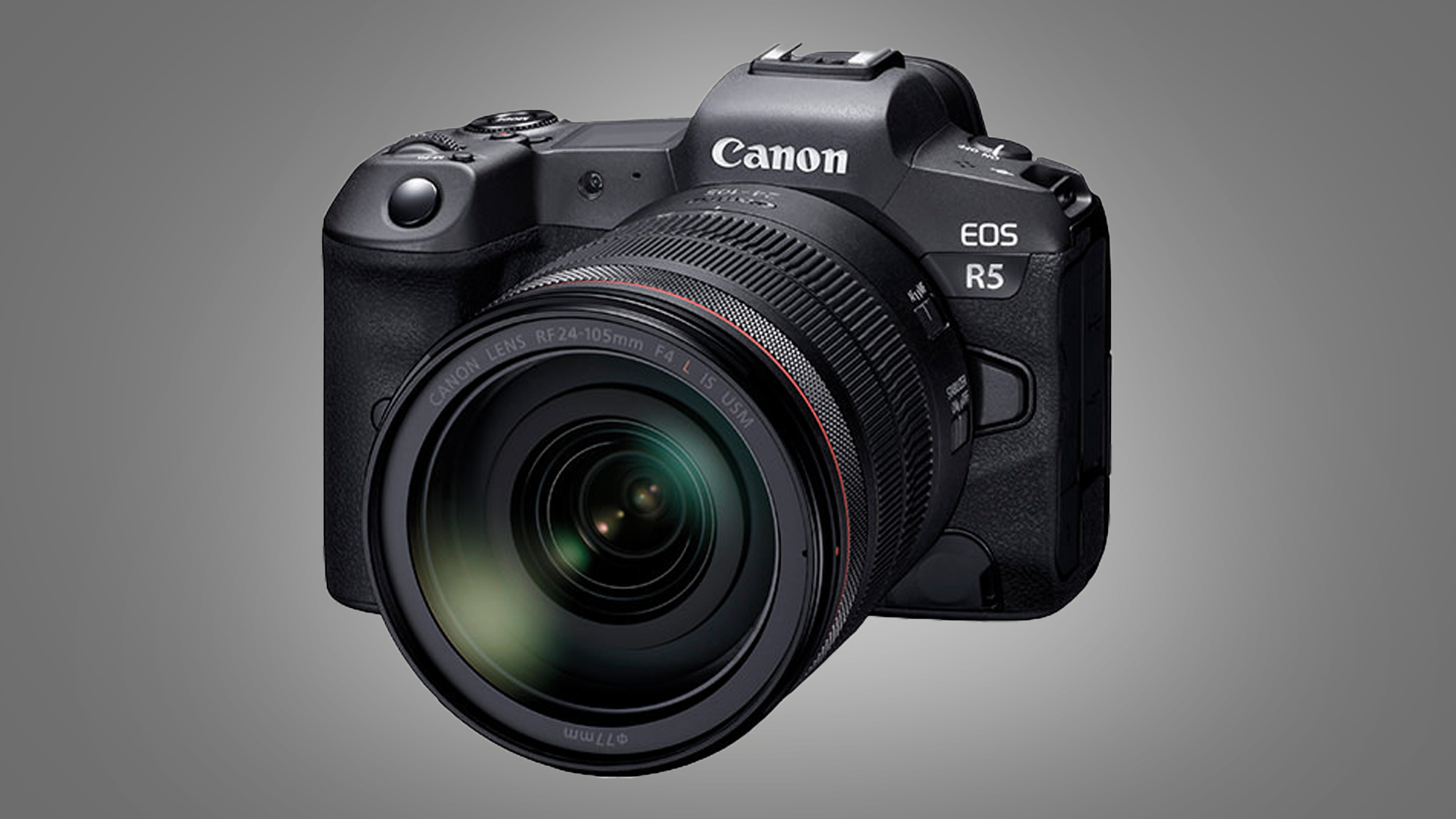
- Why it's a classic: it's the best RF-mount camera so far
We were in two minds about this one – should this spot have been taken by the original EOS R? Sure, the EOS R5 is better in every conceivable way – it’s faster, higher-resolution, shoots video far more competently, we could go on – but the EOS R, after all Canon’s first RF-mount camera. If the RF mount goes a similar distance to the outgoing EF mount, the EOS R might actually end up being the more significant camera.
Crucially, though, it isn't the better camera, and for the horde of photographers – both pros and amateur – who have adopted the EOS R5, it’s easy to make a case for why the R5 is a camera of historic significance. For one thing, the ‘5’ in the name suggests it’s a successor, either intentionally or accidentally, to the EOS 5D series.
For another, it implements just about every technical trick you could want in a camera in 2022. 45 megapixels, 20fps from its electronic shutter (12 with the mechanical shutter) and over 5,000 autofocus points, complete with a frankly other-worldly animal, human and vehicle detection and tracking system. And that’s before you get into video – up to 8K raw for those with shares in SanDisk, or 10-bit 4K at up to 100fps.
It’s all done with Canon’s legendary full-frame aplomb and color science, and while you can certainly make the case that the EOS R6, R, RP and EOS R3 are all superlative cameras in their own right, the EOS R5 was the one that brought the message home to both Canon acolytes and the company’s competitors – mirrorless is here to stay, and Canon is all in.
4. Canon EOS D30 (2000)

- Why it’s a classic: it was Canon’s first in-house digital SLR
Well, we say that the EOS D30 is Canon’s first digital SLR – in fact, for a few years up to the arrival of the D30 in the year 2000, Canon had been collaborating with Kodak to produce a range of film bodies adapted to shoot digital. These included the 6MP EOS D6000 or 1995’s appalling-looking EOS DCS 1, whose design meant the digital gubbins nearly trebled the height of the camera.
The EOS D30 was a 3.25MP camera that was designed from the beginning as a digital camera – not a film camera with the film transport mechanism ripped out and replaced with a Frankenstein-style digital sensor. Its sensor was an APS-C size number capable of shooting ISOs from 100 to 1600, at a maximum rate of three frames per second.
Design-wise it was tried-and-tested – the D30 was virtually indistinguishable from its contemporaneous EOS film brethren, and indeed you’d have to look carefully to spot many differences between this and the likes of the later Canon EOS 40D or 50D.
Almost, anyway – flip it around and you’d have found a paltry 1.8in review monitor with just 114,000 pixels, which might not sound like unbelievable value for money on a camera that around $3,000 / £3,000. But remember that for photographers in the year 2000, being able to see a shot the instant it was committed to a memory card (CompactFlash or a Microdrive in this case) would have prompted a similar reaction to watching a pig fly.
3. Canon EOS 650 (1987)
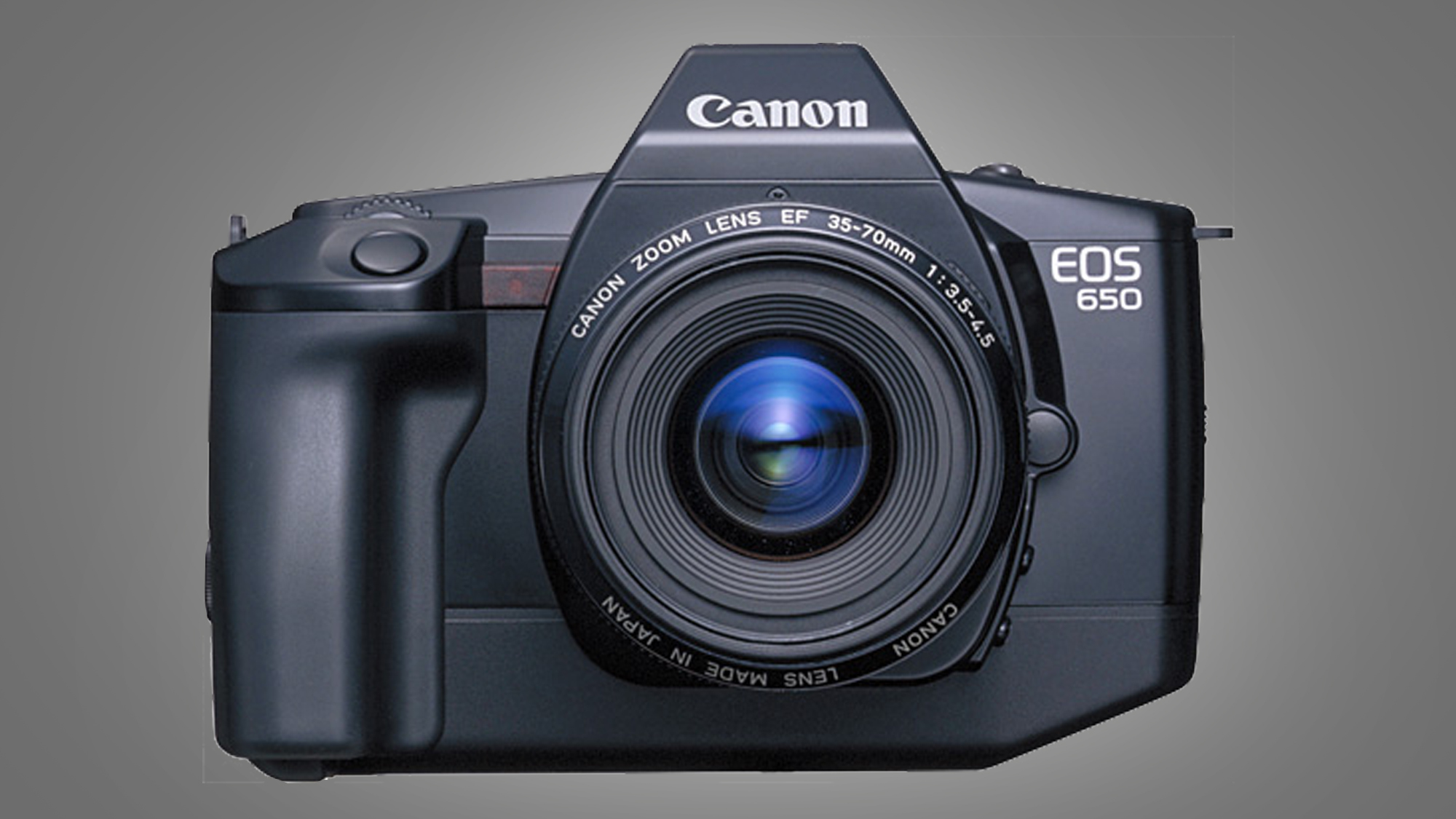
- Why it's a classic: timeless design – and the debut of a hugely important piece of camera tech
You could be forgiven for blinking a bit hard on this one – at first glance the EOS 650 is a relatively nondescript, single-height, 35mm film camera. It debuted in 1987, and looking at it now there’s not a huge amount that makes it ground-breaking. It could shoot up to 3fps thanks to its motorized film-winder, and offered TTL metering, all in a body that cost around $830 / £620 / AU$1,140 in today's money.
So far, so ordinary. But what made the EOS 650 remarkable was its lens mount. Until the EOS 650, Canon had used the FD mount – a (mostly) manual-only mount that had been in use for nearly 20 years. The EOS 650 introduced the EF-mount – an electronic-only lens mount that eschewed body-mounted AF motors (Nikon, we’re looking at you) in favor of high-speed data transfer between the camera lens mount and the lens itself.
It was groundbreaking at the time, but the reason we’re including it here is because it’s a piece of electronic, industrial and technological design that has withstood the test of time better than almost anything else we can think of. Canon introduced the RF mount – the EF mount’s replacement – as recently as 2018, which meant that for over 30 years, the EF mount was the choice of countless amateur and professional photographers.
It withstood the seismic shift from film to digital, from stills-only to hybrid video shooting, vastly increased resolving power as well as improvements in data handling and bandwidth technologies. It’s a spectacularly effective and long-lived piece of photographic design and it's inarguable that the photographic world is the richer for its existence. Well played, scientists.
2. Canon EOS 5D Mark II and EOS 5D (2008, 2005)
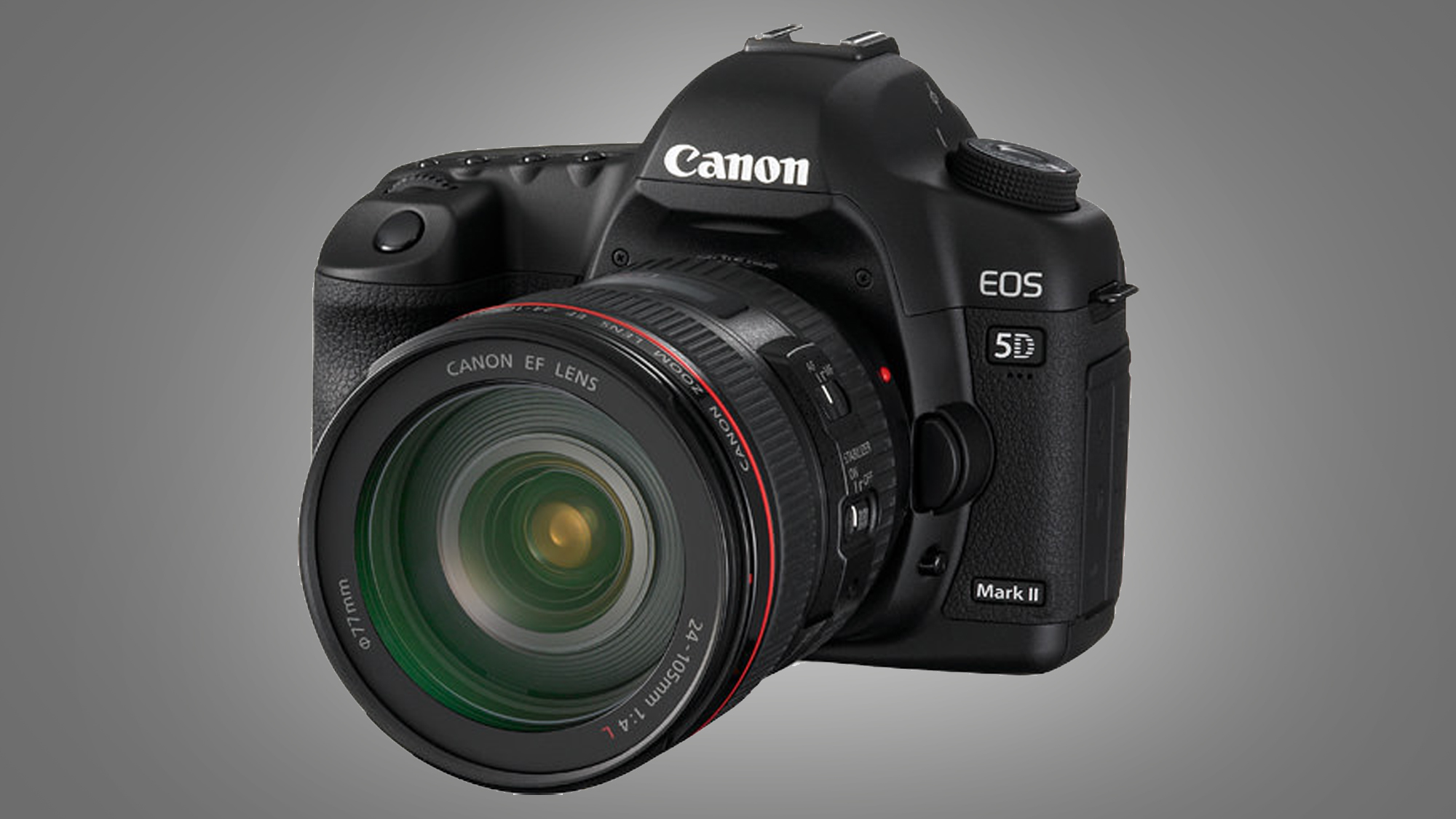
- Why it's a classic: epic build quality and Full HD video comes to full-frame DSLRs
We've cheated a bit here and included the EOS 5D and EOS 5D Mark II in one entry, as they're both classics in their own right. The EOS 5D was special because it was Canon’s first half-height DSLR – in other words, one with no integrated battery grip. And while 'affordable' might be shading it just a touch, it brought full-frame photography to an entirely audience. We lapped it up – full-frame photography meant tighter depth of field, outstanding performance at higher ISOs, and better-quality images across the board.
It was built like a tank as well – the fact that the EOS 5D range’s design hasn’t changed significantly between the 2005 original and the 2016 EOS 5D Mark IV speaks volumes to Canon’s engineers getting it right on their first swing.
The original 5D was a beast – a 12.8MP sensor and maximum ISO of 3,200 instantly made it a favorite of studio photographers the world over, and there’s a global legion of wedding photographers who would rather trip the bride up on her way down the aisle that shoot a wedding without some variant of the 5D on their shoulder.
It wasn’t perfect – 9-point AF was pedestrian even in its day and the less said about its top turn of speed (just 3fps) the better; which is where 2008’s EOS 5D Mark II came in. This improved on the original in nearly every way, adding resolution (21.1MP), speed (4fps), ISO (25,600 at the top end) and, most importantly, video.
The EOS 5D Mark II was Canon’s first DSLR to shoot video, and good quality, 1080p video at either 30 or 24fps. It was enthusiastically embraced – a 2010 episode of House was shot with a fleet of 5D Mark IIs, as was part of The Avengers.
1. Canon AE-1 (1976)
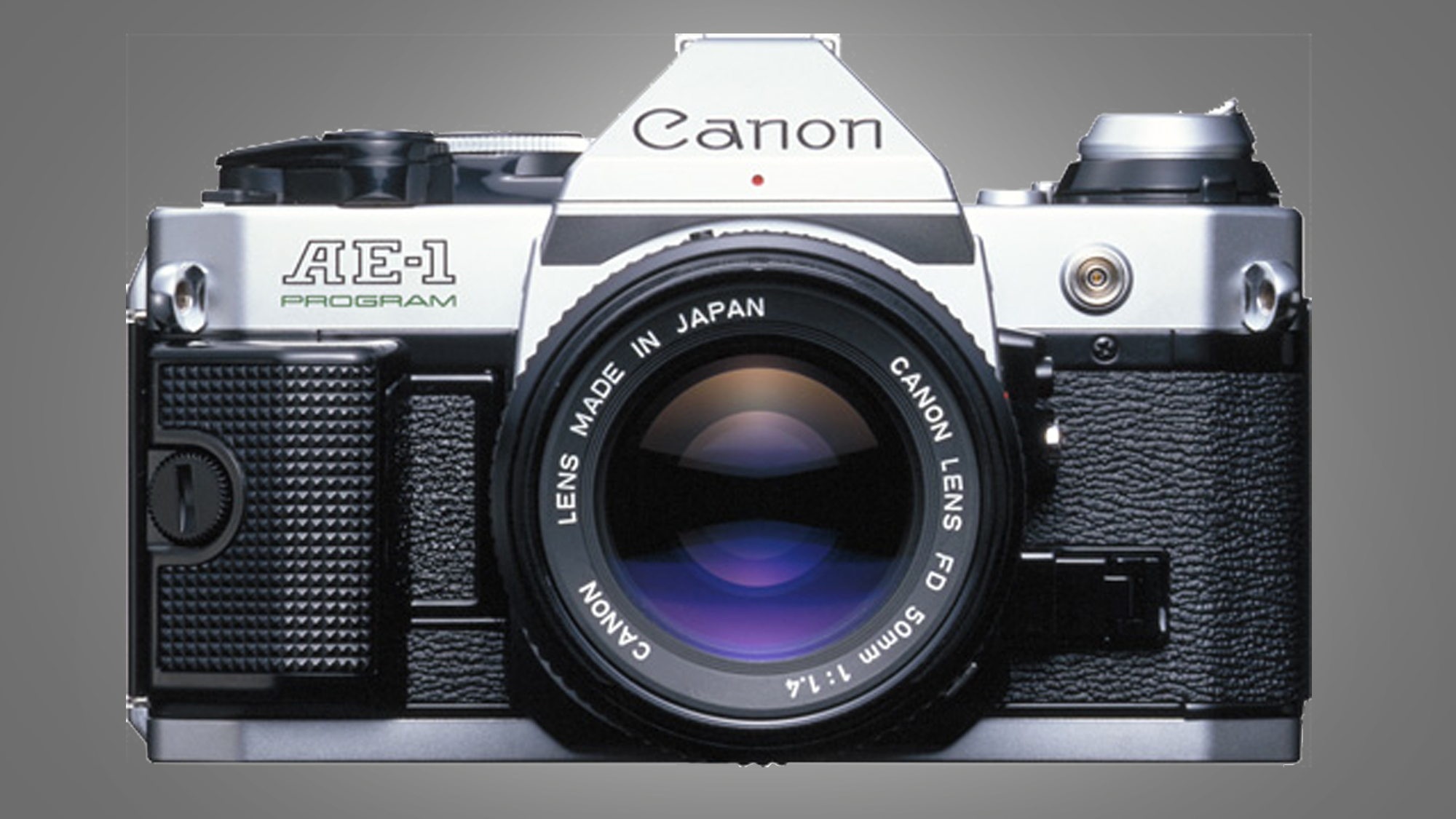
- Why it's a classic: looks, features, heritage – this design icon has it all
If the AE-1 looks familiar, it’s because its angular profile, striking silver finish and leather-texture plastics have been a mainstay of photographic product design for a generation.
Originally released in 1976, it’s a surprisingly common sight today – these sold like photographic hot-cakes, with Canon shipping nearly six million units before they stopped being made in 1984. The sheer volume of cameras manufactured, along with Canon’s legendary, longevous build-quality, means no stroll along through a hipster coastal town are complete without a few sightings of this legendary 35mm, auto-exposure camera.
Did we say auto-exposure? We sure did – this is the first SLR to include a microprocessor, and it was this – which assured ease of use – as well as the relatively affordable price of the camera, that ensured the AE-1’s place in photographic history. The AE-1 used Canon’s FD-mount – a manual-focus-only mount that supports dozen of lenses from the cheap and cheerful (if you have an AE-1 you have one) 50mm f/1.8 to the gleefully bonkers, 5kg, FD800mm f/5.6L.
In use, it’s a beautifully mechanical-feeling piece of kit. You could get an electrical Power Winder if you really wanted one (allowing you to shoot at a terrifying 2fps!), but to a modern analogue photographer, that rather robs you of the satisfying tactility of pulling the manual winding handle after every shot. Similarly, rewinding is a matter of unfolding the rewinder on the left-hand shoulder of the camera and manually spinning the film back into its canister.
Honorable mentions
We couldn't include every great Canon camera in this list, or fully represent the sheer range of its creations. So to give credit to some of the camera giant's less mainstream creations (and also defend us from the outcries of their aghast owners) here are some other Canon classics that nearly made the cut.
Canon EOS Ra (2019)

Discontinued virtually as soon as it was announced, the EOS Ra is a slightly rejigged EOS R. The ‘A’ stands for “astronomy” – the sensor had a modified infrared filter, allowing it to admit more than four times more light at the hydrogen alpha wavelength, which to astrophotographers means more vivid deep-space detail.
Canon VT (1956)
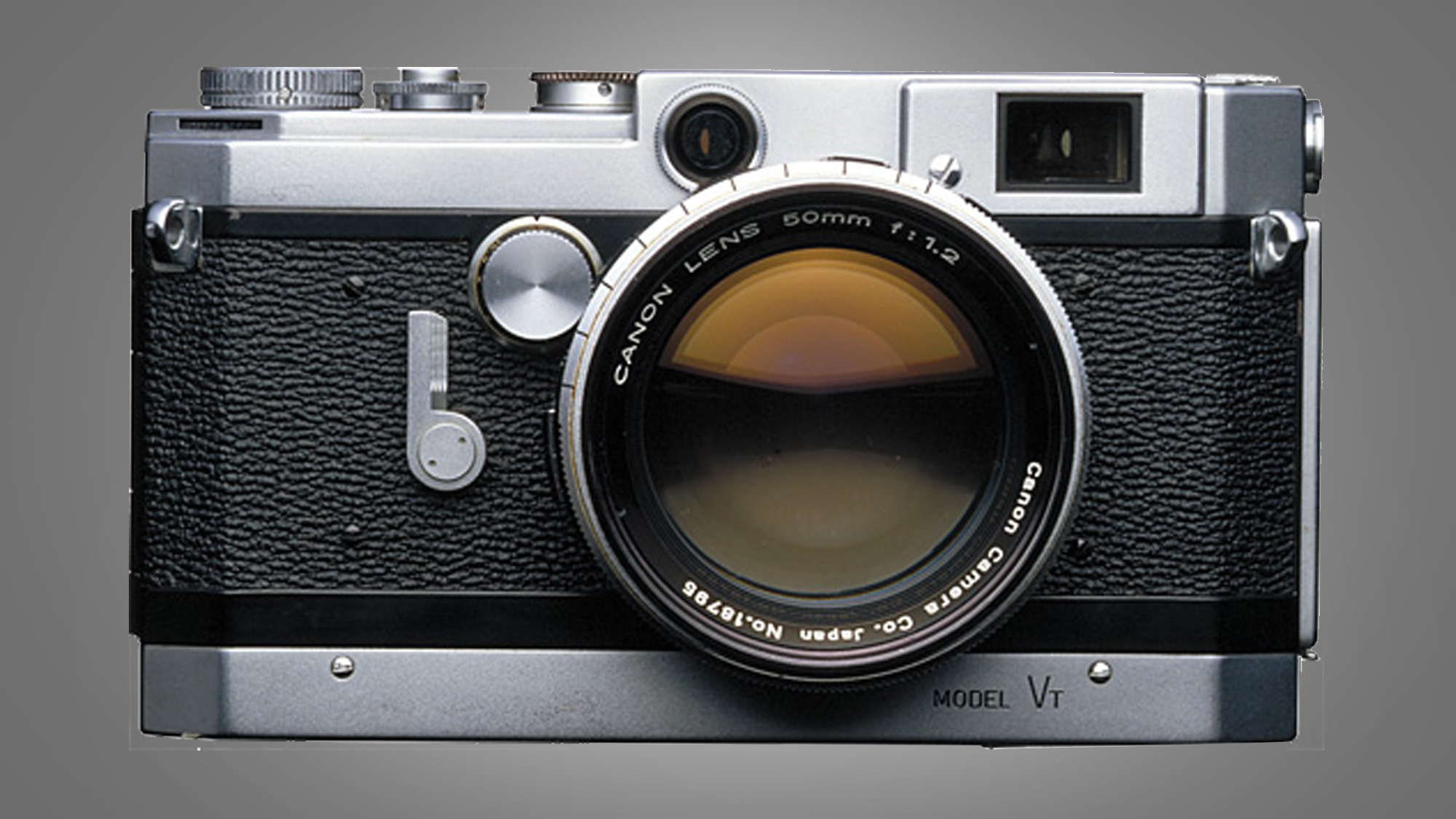
Before Canon pushed all its chips onto the SLR segment, its rangefinders were the business – with the 1956 VT an abortive attempt to take the game to kings-of-the-hill Leica.
Canonet QL17 GIII Rangefinder (1972)

Another rangefinder, this time from the 1970s when, as you’ll know from everything above, was a time Canon was pushing into the SLR market in a serious way. That didn’t mean it had forgotten the old rangie, though.
Canon EOS 350D (2005)

This deserves a mention partly because it was a genuine breakthrough – a well-built, APS-C DSLR that the masses could afford – and partly for personal reasons. A gorgeous, compact piece of kit that was more than capable of doing the business.
Canon PowerShot Pro70 (1999)
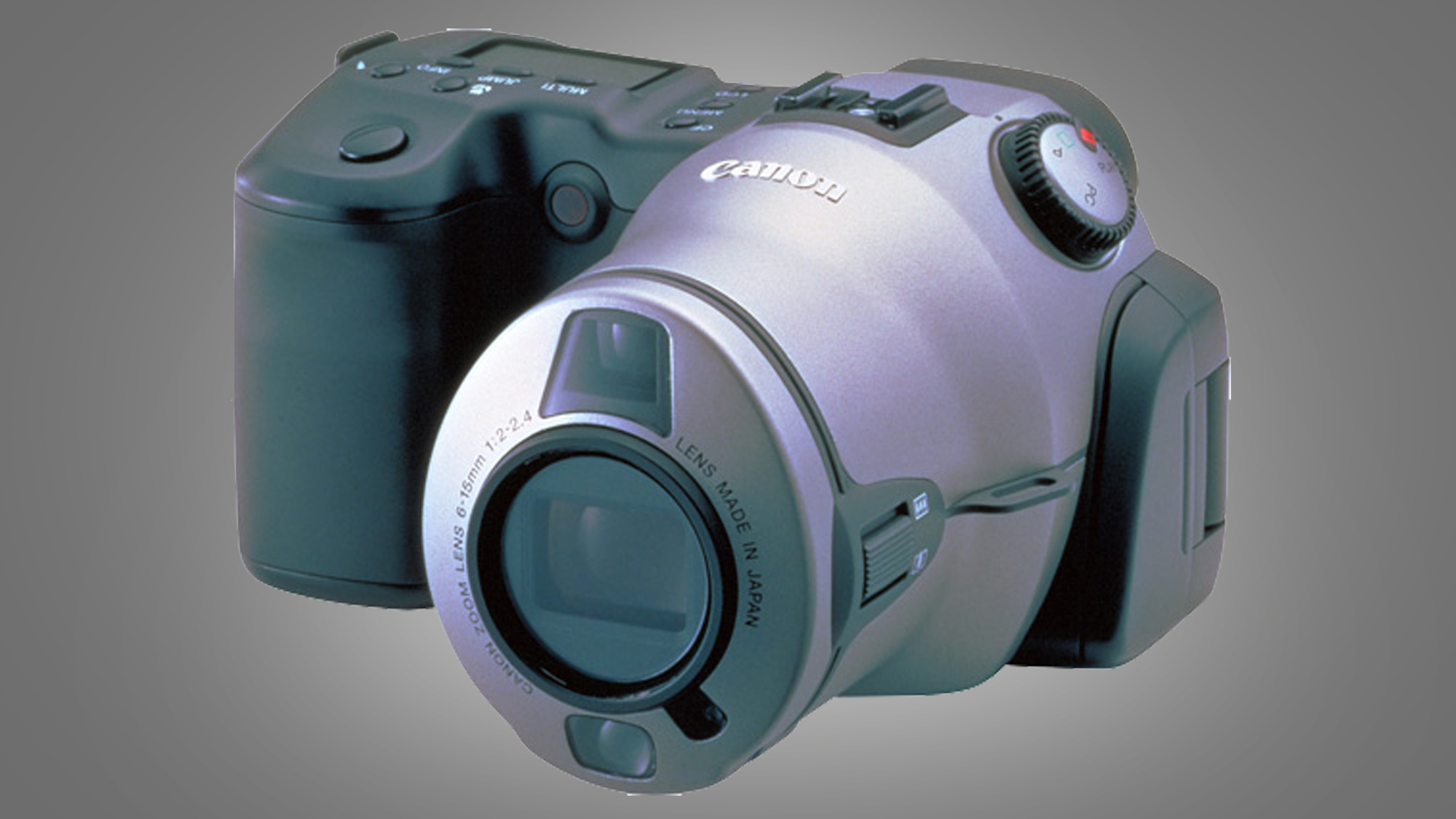
The PowerShot Pro70 is here partly because of its ahead-of-its-time specs – 1.68MP in 1998 was positively futuristic – and also because of its screamingly futuristic design. It looks like something from Wall-E, and there’s nothing wrong with that.
Dave is a professional photographer whose work has appeared everywhere from National Geographic to the Guardian. Along the way he’s been commissioned to shoot zoo animals, luxury tech, the occasional car, countless headshots and the Northern Lights. As a videographer he’s filmed gorillas, talking heads, corporate events and the occasional penguin. He loves a good gadget but his favourite bit of kit (at the moment) is a Canon EOS T80 35mm film camera he picked up on eBay for £18.
- Mark WilsonSenior news editor